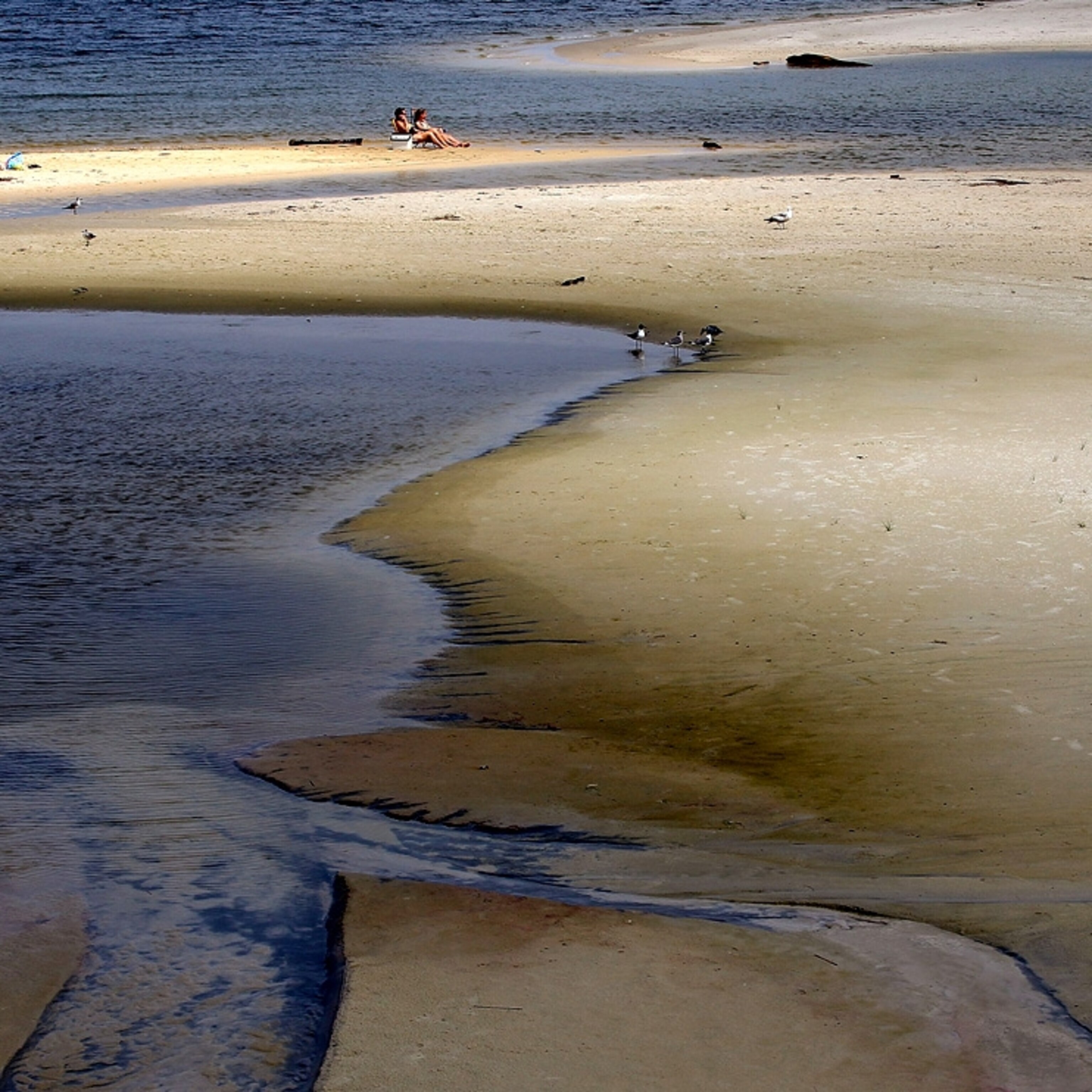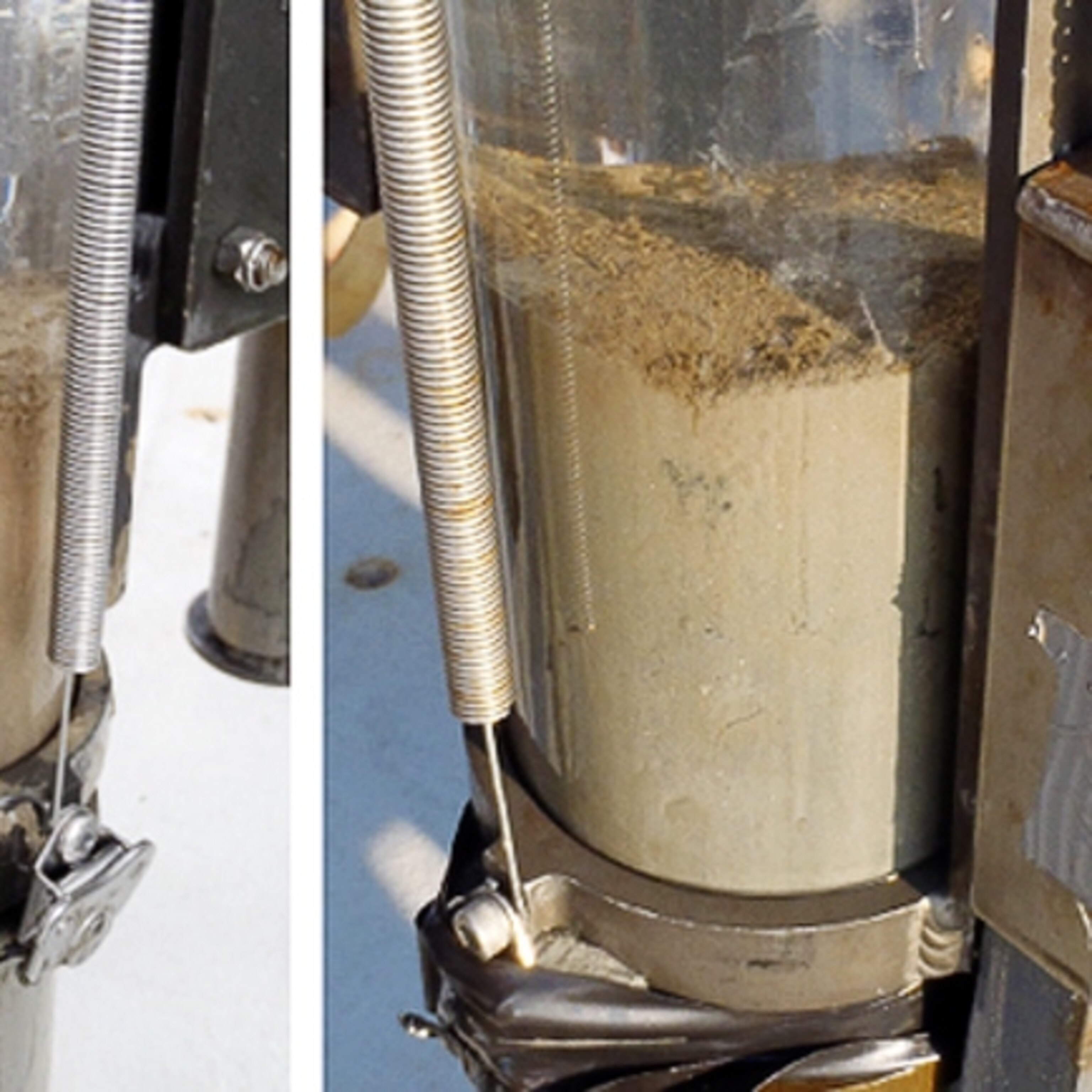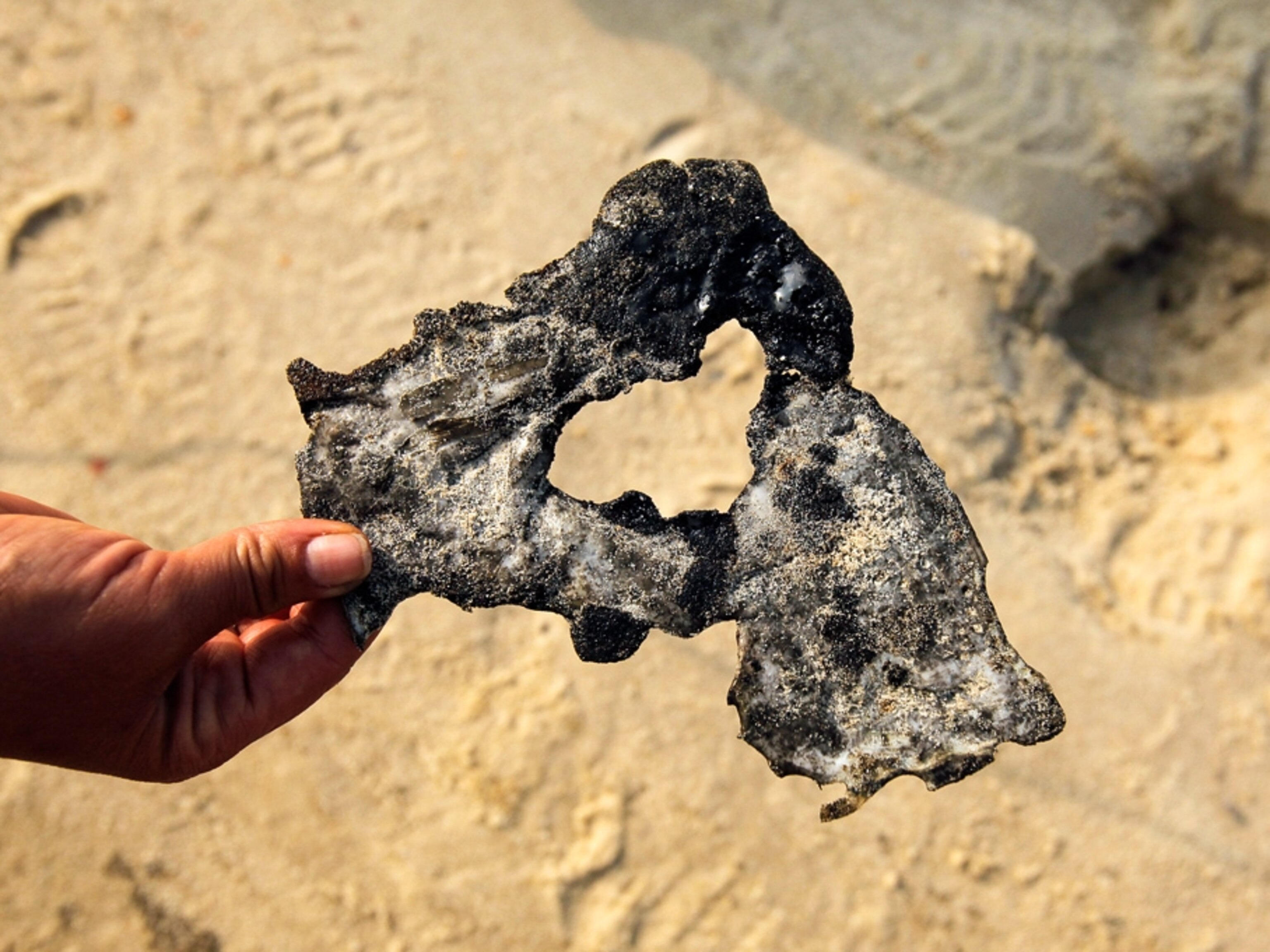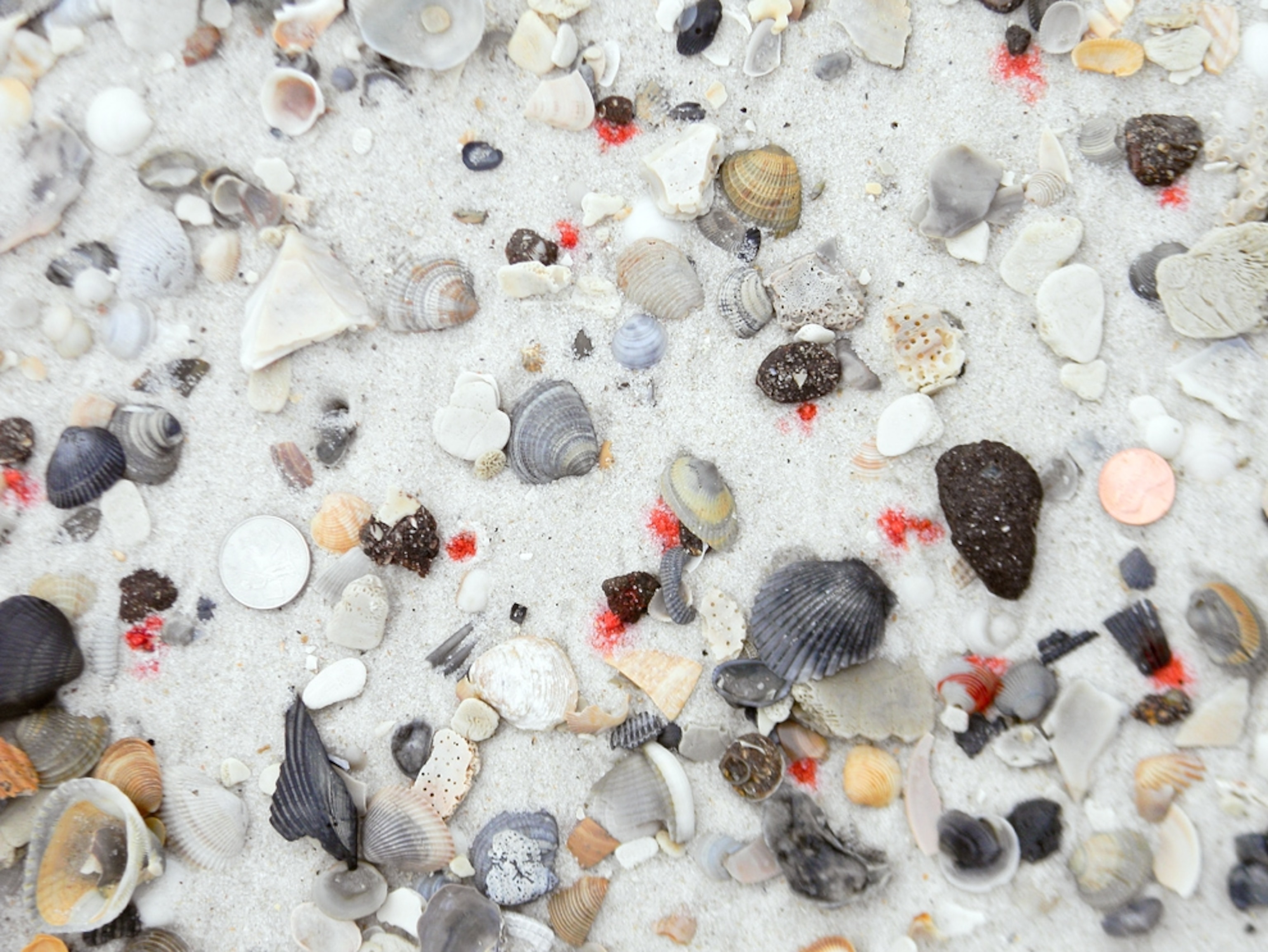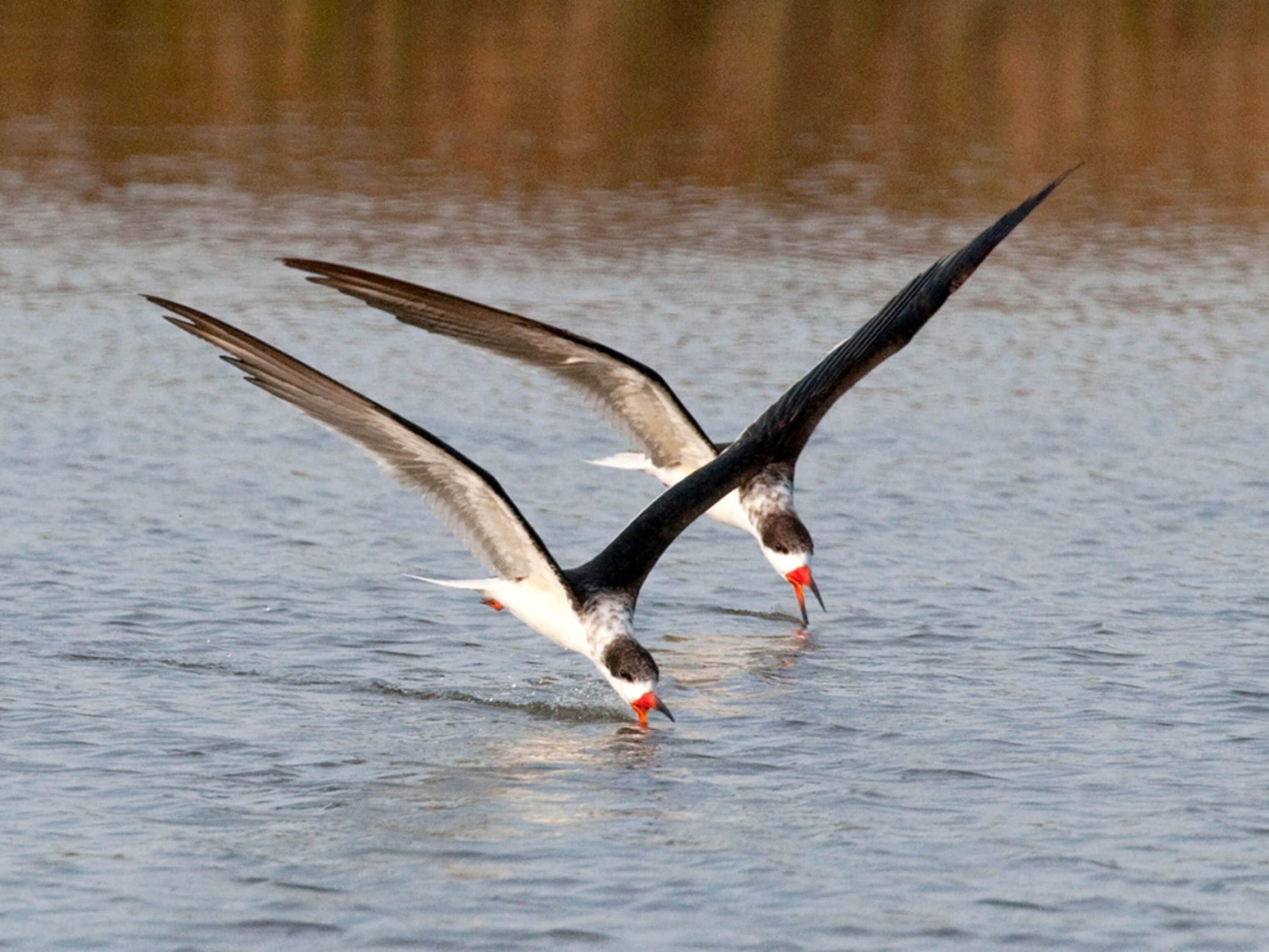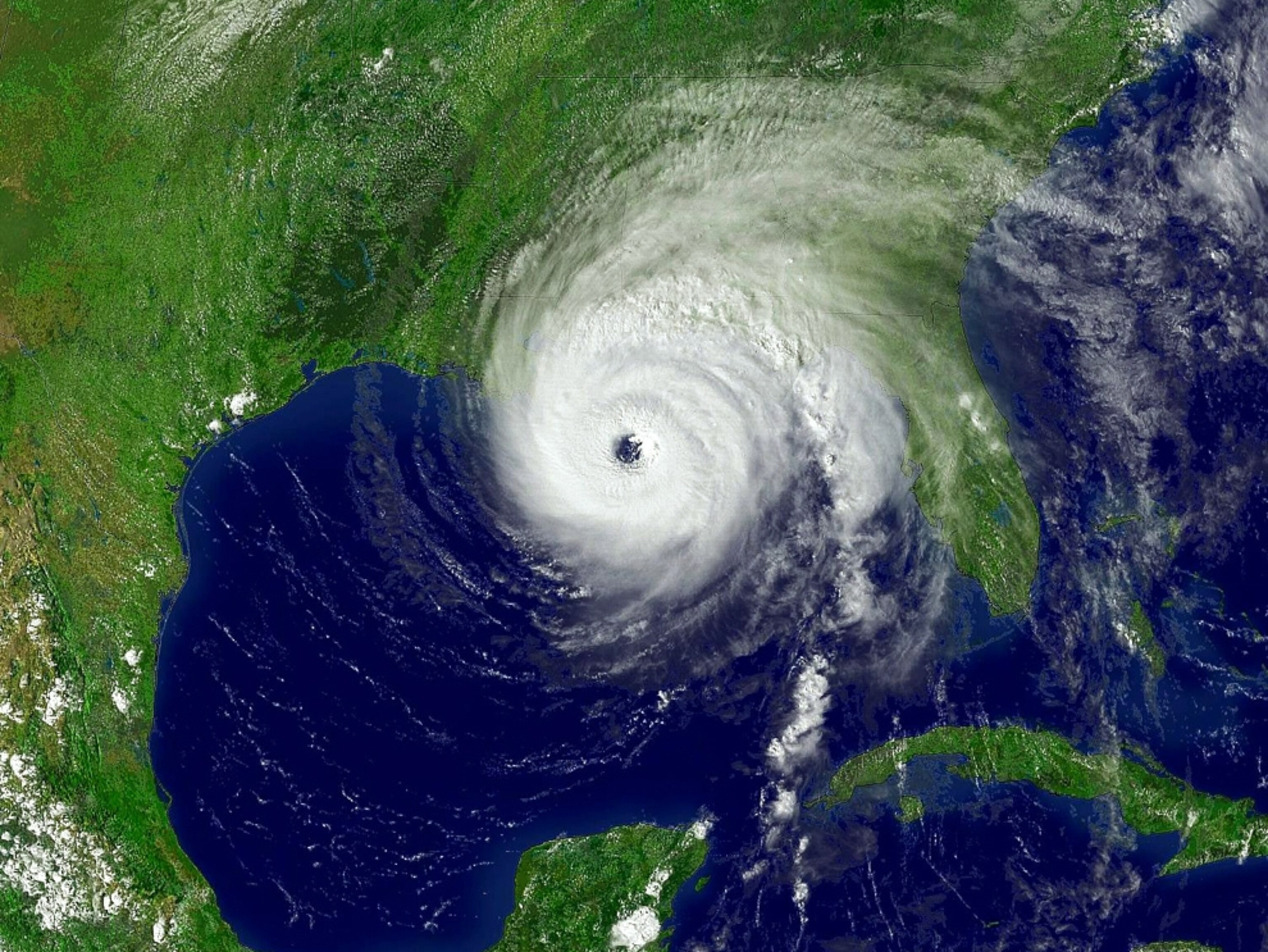
Gulf Oil Spill Anniversary: Hard-Hit Beaches Mostly Oil-Free
But outside tourist areas, oil will take longer to degrade, expert says.
Florida and Alabama beaches hardest hit by the Gulf oil spill are largely oil-free a year later, though some shores outside the public eye remain contaminated, scientists say. (Read more Gulf oil spill anniversary coverage.)
Crude that caked beaches in thick mats or sat buried under several feet of sand has almost vanished along study sites in southern Alabama and the Florida Panhandle, where scientists are finding only tar balls—hardened remnants of the least degradable and less toxic ingredients of oil. (See pictures of Gulf oil found buried under Florida beaches.)
Since June, coastal geologist Ping Wang and his team have been regularly monitoring oiled beaches from Panama City west to Dauphin Island (see map)—one of stretches of the Gulf most slammed by the spill. By February, the scientists could detect oil only via fluorescent light. (See pictures of glowing oil taken in July.)
"If you make a sand castle, you won't really see the physical form of oil that can be identified with the naked eye," said Wang, of the University of South Florida (USF) in Tampa.
That's even the case offshore. For five days in September, Wang and his team took surface and core sediment samples in shallow water off oil-saturated coasts in northwestern Florida and Alabama—and turned up no visible crude. (See a summary linking to the full report.)
"We searched high and low [and found] not even a single tar ball, to my great surprise," he said.
(See "Gulf Oil Spill Surprise: Methane Almost Gone.")
Markus Huettel—who has been surveying beaches monthly in Pensacola, Florida—also found that much of the oil has broken down. But he noted that some of the tougher components, such as asphaltenes and resins, will be degraded at a much slower pace.
"It's not that after one year everything is gone," cautioned Huettel, a biological oceanographer at Florida State University (FSU) in Tallahassee. "That's just not possible."
Oil Breakdown Aided by Bacteria, Cleanup, Weather
Overall 1,053 miles (1,694 kilometers) of coastlines in Mississippi, Louisiana, Alabama, Florida, and Texas are known to have been blackened by the BP disaster.
Of those affected areas, 83 miles (134 kilometers) remain heavily or moderately oiled as of January, according to data collected for the Natural Resource Damage Assessment, a government research process that's required following oil spills.
None of the remaining oiled coastlines are in Florida, according to that report.
In the Sunshine State, three factors converged to speed up the oil breakdown: Responsive bacteria, calm weather, and aggressive efforts by cleanup crews led by Deepwater Horizon Unified Command, the joint federal-industry task force that responded to the Gulf oil spill, experts say.
For one, native bacteria species that prefer oil took immediately to the new food source and dramatically increased in number, according to experiments by Joel Kostka, an FSU microbial ecologist.
"Microbial degradation is likely to be the predominant mechanism by which oil is ultimately removed from the marine environment," Kostka said via email. (See marine-microbe pictures.)
Weather also lent a helping hand. Despite predictions of a busy 2010 hurricane season, the Florida Gulf Coast stayed mostly calm throughout the summer and fall, so "oil that got buried under the beach and stayed there didn't get scoured out or aggressively redistributed, and that helped for cleanup efforts," USF's Wang noted.
At first, human-powered cleanup efforts were only making things messier.
In late July and August, raking machines that were supposed to collect oil instead pulverized much of the thick oil sheets into fingertip-size pieces that dotted the beaches, Wang said. What's more, just by driving on the beach, the machines inadvertently broke up tar balls—which were still soft—into smaller pieces that were harder to pick up. (Watch video: "Exxon Valdez Lessons Applied in Gulf Coast Cleanup.")
So in winter crews switched to more extreme measures, deploying excavation machines that removed entire sections of sand up to 2 feet (0.6 meter) deep. The workers then passed that sand through a sieve, catching most of the oil and leaving only fine particles.
The sieving gave bacteria a boost, both by breaking oil into tinier pieces and making the oil more accessible overall. (Read more about how nature is fighting the Gulf oil spill.)
"It's like your compost pile—it doesn't degrade as fast as when you get out there and shake it up a little bit," said microbial ecologist Dick Snyder of the University of West Florida (UWF) in Pensacola. "The bacteria do wonders."
Snyder has been sampling for oil twice a week along the Florida Panhandle and offshore along the Continental Shelf since May 2010, and he's also seen oil concentrations plummet.
For his next sampling trip, "I'm anticipating coming up with a whole bunch of zeros—we haven't had a hit since last summer."
Outside Tourist Areas, A Different Story
Yet outside Florida, there are few scientists studying oiled Gulf beaches—leaving a lot of shores unsurveyed, FSU's Huettel cautioned.
"Most of the oil layers in the tourist areas are gone, [but it's a] different story in salt marshes and remote islands," he said. (See pictures: "Heavy Oil Seeping Into Louisiana Marshes.")
"In these areas, you can anticipate oil layers [will] sit there for a while, because you don't have cleanup efforts," he said.
History suggests marshes don't easily bounce back from oil. For instance, in 1991 the Iraqi military intentionally spilled up to 336 million gallons (about 1.3 billion liters) into the Persian Gulf.
Up to 89 percent of the affected Saudi Arabian marshes and 71 percent of the mud flats had not bounced back after 12 years.
BP may soon provide funding for scientists to "specifically look at sites that are out of sight for tourist organizations," Huettel added.
Cleanup More Harmful Than Oil?
Likewise, no one knows whether the oil sparked any longer lasting harm to the environment—or if trace amounts still floating in the ocean are detrimental.
Since July marine ecologist Susan Bell and colleagues have been monitoring the same beaches as USF's Wang to see what happened to the creatures that live in the "swash" zone, the area of the beach where waves break and kids play.
This zone houses sun-shy ghost crabs, which swarm Gulf beaches at night, as well as small invertebrates such as clams and mole crabs that burrow in the sand.
After months of studying the animals' populations and health, "we couldn't find anything that we could say was a direct impact of oil," said Bell, of the University of South Florida in Tampa.
It's still possible that tar balls that continue to wash up on beaches may be ingested by these organisms and will hurt their reproduction or overall health.
However, "one thing that really stood out to us wasn't the oil spill impacts, but the actual cleanup process."
For instance, cleanup crews and machinery removed seaweed and other organic material that washes up on the beach, which many small creatures depend on for food. Likewise, both beach-roving vehicles and the sieving processes likely killed ghost crabs or destroyed their burrows.
(See "Gulf Oil Cleanup Crews Trample Nesting Birds.")
"We don't know what the consequences of that's going to be in the long term," Bell said.
Likewise, UWF's Snyder and colleagues have discovered small amounts of polycyclic aromatic hydrocarbons (PAHs)—a toxic ingredient of oil—in water, sand, and beach clams called coquinas.
"It's those low levels of PAHs that are the concern now," he said.
That's because, if the coquinas are picking up the pollutant in their bodies, there's a good chance it's found its way into other marine species up the food chain, Snyder said.
Yet overall, at least for the Florida Panhandle, the environmental prognosis doesn't seem as dire as it was last summer, UWF's Snyder emphasized.
"Everyone's relieved that we don't have this huge lingering mess on our hands."


